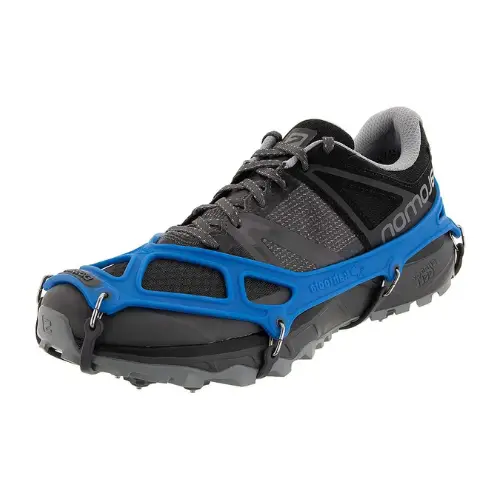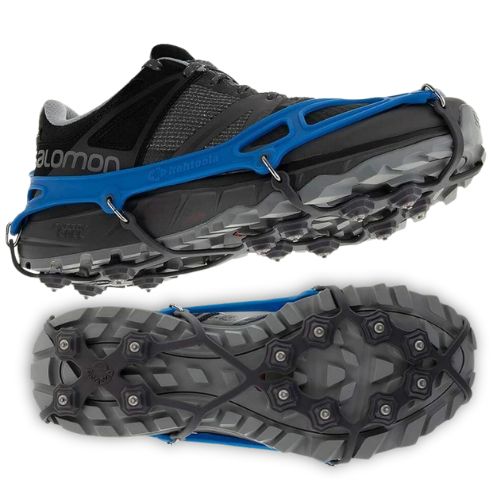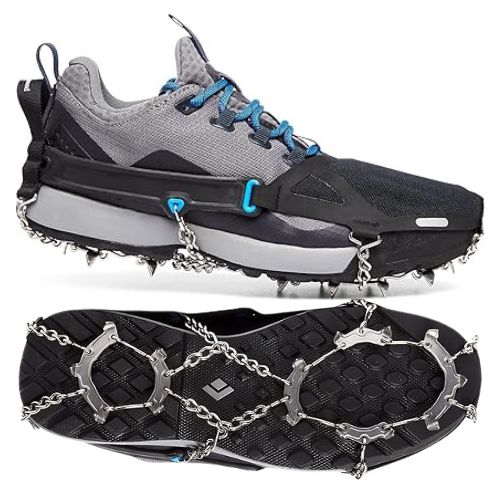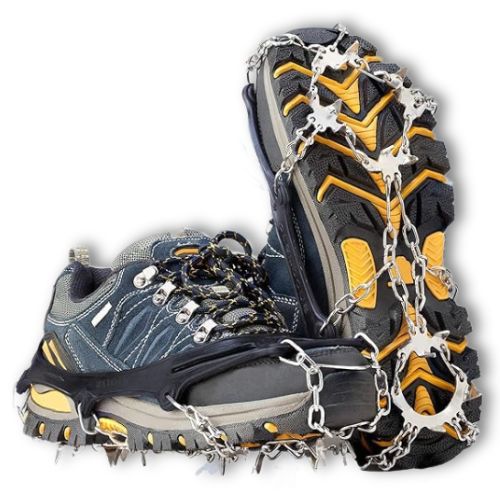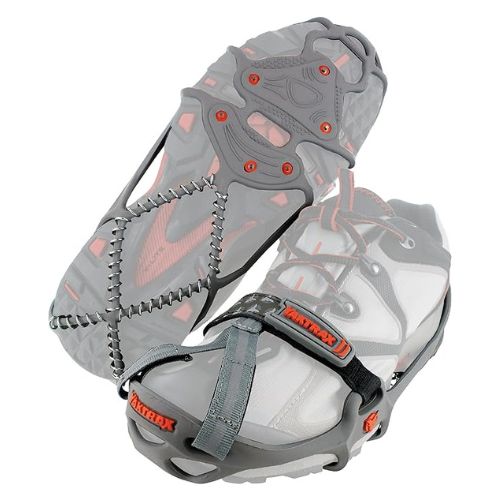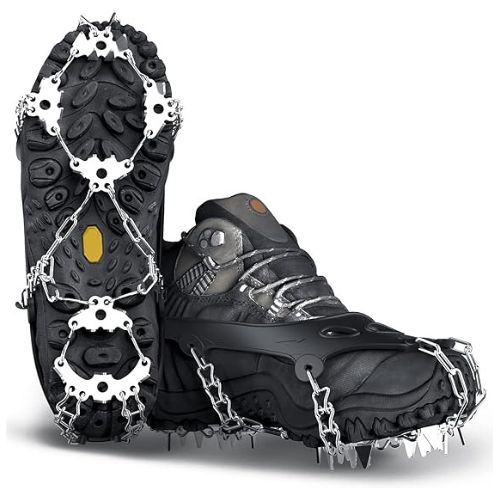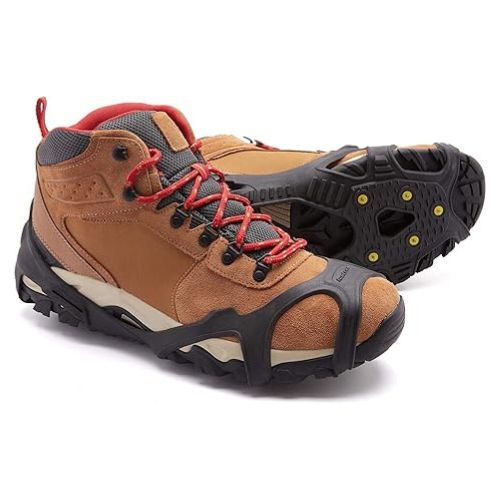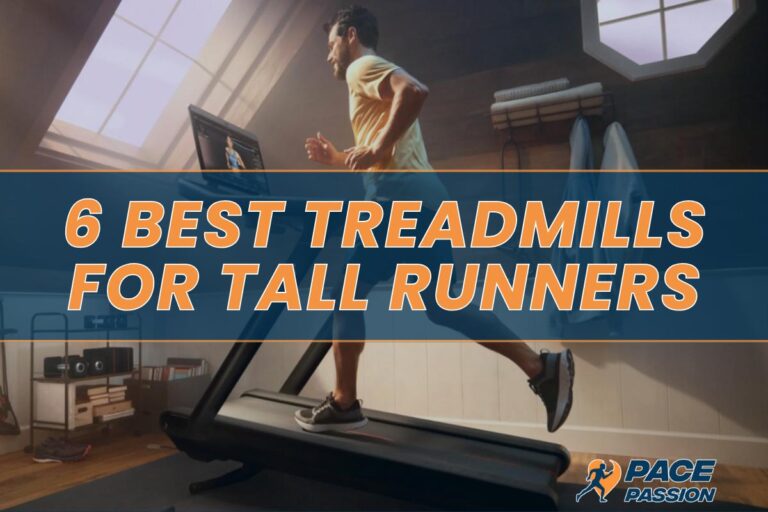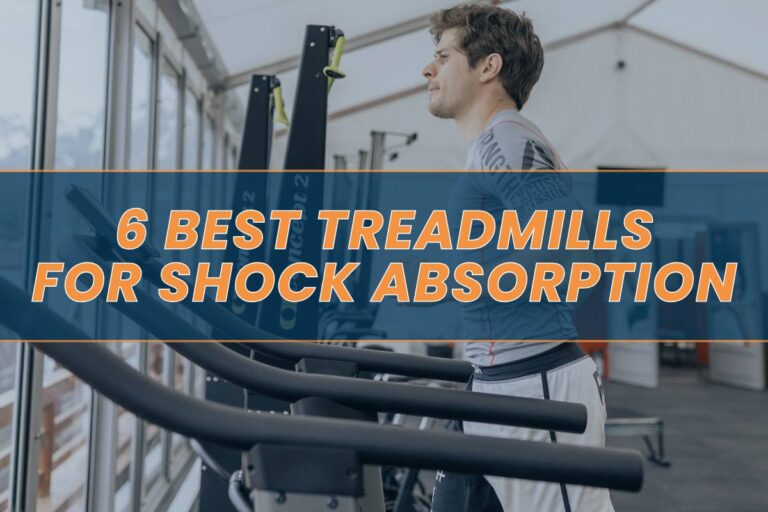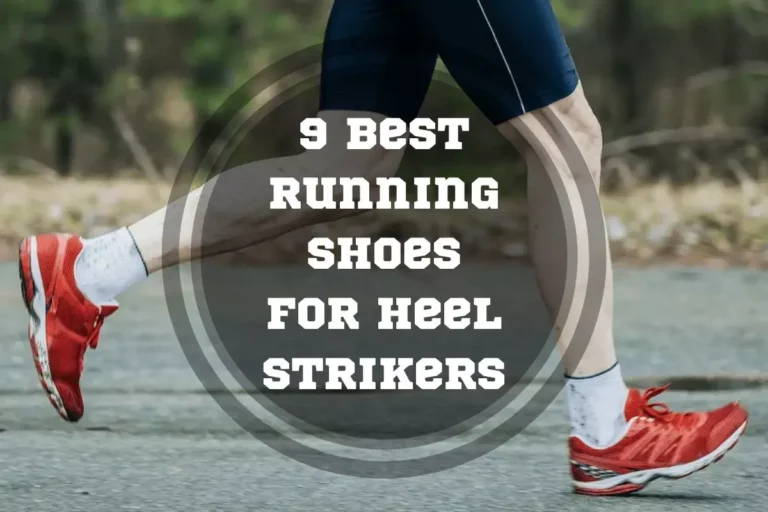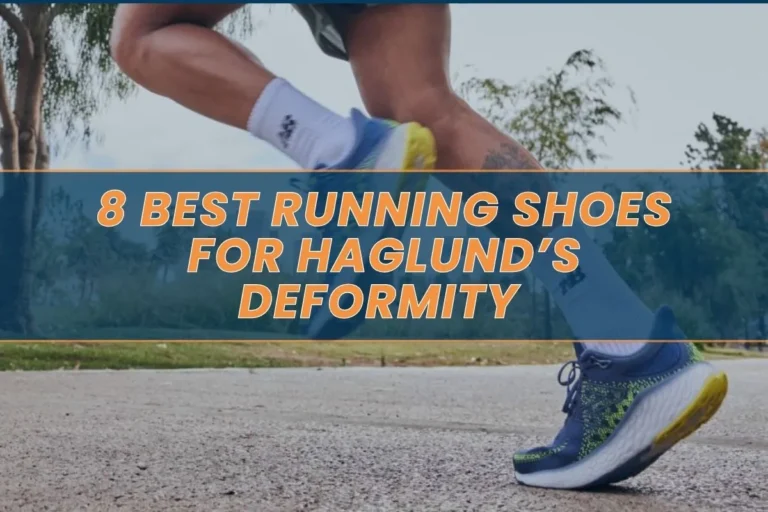6 Best Microspikes for Running in 2025
Are you a runner looking for reliable traction devices and winter running gear? The best microspikes for running can provide excellent grip on snowy and icy trails, increasing safety and helping prevent slips.
Our experts have explored dozens of options and picked 6 best microspikes products so you can find the best traction for your specific needs. From trail difficulty to tungsten carbide spikes, read on for a breakdown of 6 top-rated microspikes that’ll keep you safe out there this winter!
In a HURRY! Skip to Our Pick
The Kahtoola EXOspikes Footwear Traction is an indispensable accessory for runners into icy terrains. Crafted from premium materials, these spikes offer lightweight, breathable, and comfortable traction, ensuring a secure grip during challenging winter runs.

Top 6 Best Microspikes for Running Reviewed
- Kahtoola EXOspikes Footwear Traction – Top Pick
- Black Diamond Distance Spike – Premium Choice
- Cimkiz Crampons Ice Cleats Traction – Most Stylish
- Yaktrax Run Traction Cleats – Best Replaceable Option
- Wirezoll Ice Cleats – Most Spikes
- ICETRAX V3 Tungsten Crampons – Budget Pick
When gearing up for a winter run, it is important to take safety measures into consideration. Traction devices, such as running ice spikes, ice cleats and crampons can provide improved stability on icy terrain, helping to prevent slips and injuries while running in the snow or on ice.
Our in-depth reviews of the best microspikes designed for winter running will help you choose the right traction device for your needs. The best winter running traction devices offer enhanced balance across various terrain changes while remaining lightweight enough so it goes unnoticed during your run. Let’s dive into the comparison!
| Product | Expert Score | Comfort of Using | Weight | Versatility | Care and Storage | Durability | Value for money |
|---|---|---|---|---|---|---|---|
| Kahtoola EXOspikes | 4.9 | 5.0 | 4.9 | 4.9 | 5.0 | 4.9 | 5.0 |
| Black Diamond Distance Spike | 4.9 | 4.9 | 5.0 | 4.8 | 5.0 | 5.0 | 4.9 |
| Crampons Ice Cleats | 4.9 | 4.9 | 4.9 | 4.8 | 5.0 | 4.9 | 4.9 |
| Yaktrax Run Traction Cleats | 4.8 | 5.0 | 4.9 | 5.0 | 4.9 | 4.7 | 4.8 |
| Wirezoll Ice Cleats | 4.8 | 4.9 | 4.8 | 4.9 | 4.9 | 4.8 | 4.8 |
| ICETRAX V3 Tungsten Crampons | 4.8 | 4.9 | 4.8 | 4.8 | 4.8 | 4.8 | 4.7 |
1. Footwear Traction Kahtoola EXOspikes
Top Pick
Kahtoola EXOspikes Footwear Traction
Comparable to traditional crampon designs but more efficient, Kahtoola EXOspikes is regarded as one of the best winter traction devices available in the market today.
Comfort of Using:
Weight:
Versatility:
Care and Storage:
Durability:
Value for Money:
Expert Score:
Kahtoola EXOspikes traction devices are designed for winter hiking, backpacking, and trail running. Perfectly suited to deal with snow, ice and rocky terrain, they feature a lightweight design that offers excellent abrasion-resistance against rough surfaces while providing stability on moderate inclines.
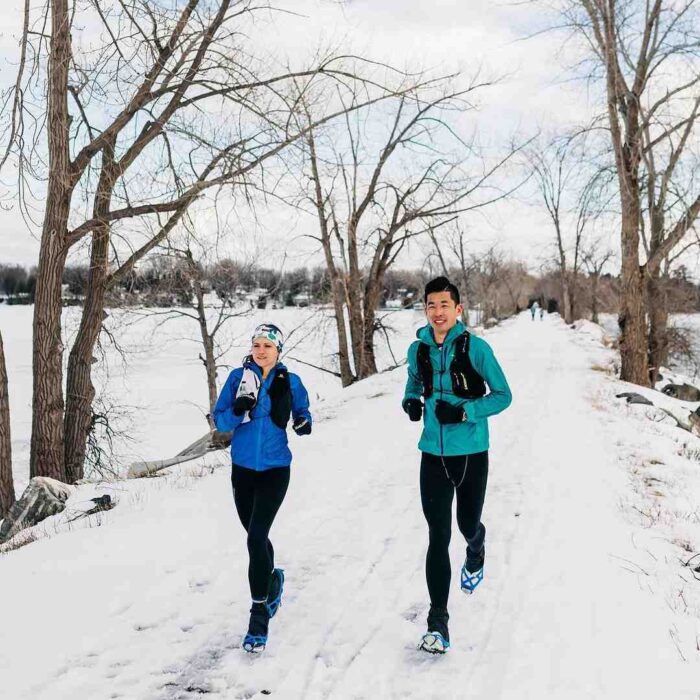
Outfitted with 12 spikes of superior durability, these versatile microspikes make an unbeatable companion for all terrains including rocks, snow or streets. They come in sizes from small to large, making them suitable for any type of shoe.
- Type: Exospikes
- Number of spikes: 12
- Spike length: 0.29"
- Sizes: XS-XL
- Weight: 8oz
- Best for: Hiking and trail running
- Recommended by athletes: Lars Bukkehave, Halle, Maria Winther, Andrea Moore
Pros:
- Comfortable to wear with flexible shoes
- Superior grip on ice
- Lightweight
Cons:
- May be a bit hard to put on due to extra secure fit
2. Distance Spike Black Diamond
Premium Choice
Black Diamond Equipment Distance Spike Traction Device
With superior strength, corrosion-resistance, and wear resistance in any weather condition, the Black Diamond Distance Spike is one of the most durable traction devices.
Comfort of Using:
Versatility:
Weight:
Care and Storage:
Durability:
Value for Money:
Expert Score:
The Black Diamond Distance Spike is the perfect addition for mountain athletes seeking reliable wintertime traction. This device features 14 stainless steel spikes, each 0.31" in length, providing excellent stability and grip on snow.
It has an innovative thin neoprene top cover that fits over the shoe's toe securely while still allowing maximum flexibility of movement. The advanced design helps keep mud and water out of your shoes when you’re running or hiking in wet conditions.
- Type: Spikes
- Number of spikes: 14
- Spike length: 0.31"
- Sizes: S-XL
- Weight: 3.35oz
- Best for: Cross-country running
- Recommended by athletes: Joe Grant, Kyle Richardson, Karina Carsolio
Pros:
- Extra lightweight
- Added durability
- Hybrid upper with waterproof toe cover
Cons:
- Expensive.
3. Crampons Ice Cleats Traction Cimkiz
Most Stylish
Cimkiz Crampons Ice Cleats Traction Snow Grips for Shoes
Cimkiz Crampons Ice Cleats provide anti-slip protection even on extra slippery terrain such as ice and snow covered trails.
Comfort of Using:
Weight:
Versatility:
Care and Storage:
Durability:
Value for Money:
Expert Score:
Cimkiz Crampons Ice Cleats offer a secure grip for hiking, fishing, and mountaineering in icy conditions. Their 19 stainless steel spikes are welded together with high technology to deliver superior traction and grip on slick surfaces such as ice and snow.
They also feature a thermoplastic elastomer construction, making them easy to put on and take off. Besides, these trail running crampons are available in many different sizes suited for men, women, and children, allowing anyone to stay safe even in the worst weather conditions.
- Type: Cleats
- Number of spikes: 19
- Spike length: 0.32"
- Sizes: Medium, Large, X-Large
- Weight: 9.44oz
- Best for: Hiking, trail running
- Recommended by athletes: n/a
Pros:
- Good for extra low temperatures (-49F)
- Easy to take on/off
- Various size options
Cons:
- Insufficient durability
4. Run Traction Cleats Yaktrax
Best Replaceable Option
Yaktrax Run Traction Cleats for Running on Snow and Ice
Whether you’re a beginner runner or experienced athlete, Yaktrax Run Traction Cleats offer solutions to keep your feet safe as you run through icy obstacles this winter running season!
Comfort of Using:
Weight:
Versatility:
Care and Storage:
Durability:
Value for Money:
Expert Score:
For winter runners looking for extra traction and stability on soft ice and packed snow, Yaktrax Run Traction Cleats are an excellent choice. These cleats feature 3mm carbide steel spikes and 1.4mm steel coils that help provide superior grip in icy conditions while also offering improved balance when running on uneven surfaces.
The replaceable carbide steel spikes dig into the surface of icy terrain to provide additional traction that can give you added confidence when out in winter weather. The shaped-edge coil design further helps deliver more effective movement no matter what type of terrain you encounter during your run.
- Type: Coil
- Number of spikes: 6
- Spike length: 0.12"
- Sizes: S-XL
- Weight: 8.8oz
- Best for: Long runs
- Recommended by athletes: Winter Vinecki, Christine Ciszek
Pros:
- Replaceable spikes
- All-direction stability
- Reflective heel and side straps
Cons:
- Lack durability
5. Ice Cleats Wirezoll
Most Spikes
Wirezoll Ice Cleats for Hiking Boots and Snow Shoes
Whether it’s hiking, running or other outdoor activities – Wirezoll Ice Cleats can help make your experience far more enjoyable!
Comfort of Using:
Weight:
Versatility:
Care and Storage:
Durability:
Value for Money:
Expert Score:
The Wirezoll Ice Cleats are designed with superior traction in mind, making them a great choice for running and outdoor activities during the winter. With 24 or 32 enhanced stainless steel spikes per cleat, along with multi-directional construction and cold-resistant material, these cleats provide an excellent grip on snow and ice.
They also feature an adjustable strap to ensure that the cleats stay securely in place throughout your run or hike. In addition to their reliable traction design, they offer reasonable durability even during intense winter conditions, which allows you to confidently use them without worrying about premature damage or wear and tear.
- Type: Spikes
- Number of spikes: 24/32
- Spike length: 0.34"
- Sizes: M-XL
- Weight: 14.8oz
- Best for: Hiking, cross-country running
- Recommended by athletes: n/a
Pros:
- Extra spikes for the best traction
- Adjustable straps
- Good durability
Cons:
- May be too heavy for long runs.
6. Tungsten Crampons ICETRAX V3
Budget Pick
ICETRAX V3 Tungsten Crampons for Shoes and Boots
Suitable for both shoes and boots, ICETRAX V3 Tungsten Crampons have been carefully designed with comfortable materials that provide a snug shoe fit while remaining lightweight at the same time.
Comfort of Using:
Weight:
Versatility:
Care and Storage:
Durability:
Value for Money:
Expert Score:
The ICETRAX V3 Tungsten Crampons are designed with 9 tough stainless steel spikes that offer improved stability and traction on icy surfaces. They securely stay in place thanks to the straps for a snug fit, and their reflective heels add visibility when out running or walking in dark conditions.
The crampons are recommended by our experts as one of the best choices for reliable winter running, backcountry hikes and casual walks over slippery terrain. Thanks to their design, they can be used without making any adjustments whether you are traveling on snow packed trails or icy sidewalks, ensuring maximum safety during low-temperature activities.
- Type: Crampons
- Number of spikes: 9
- Spike length: 0.11"
- Sizes: S/M, L/XL
- Weight: 6.3oz
- Best for: Easy runs
- Recommended by athletes: n/a
Pros:
- Reflective heel
- Easy to pull on/off
- Lightweight and snug
Cons:
- May lack traction in heavy snow conditions.
Running in Winter: Features for Runners
Running in winter can be a great way to stay active outside and enjoy the chilly weather. However, there are some important considerations for runners of all levels, such as the potential risks involved with running outdoors in freezing temperatures.
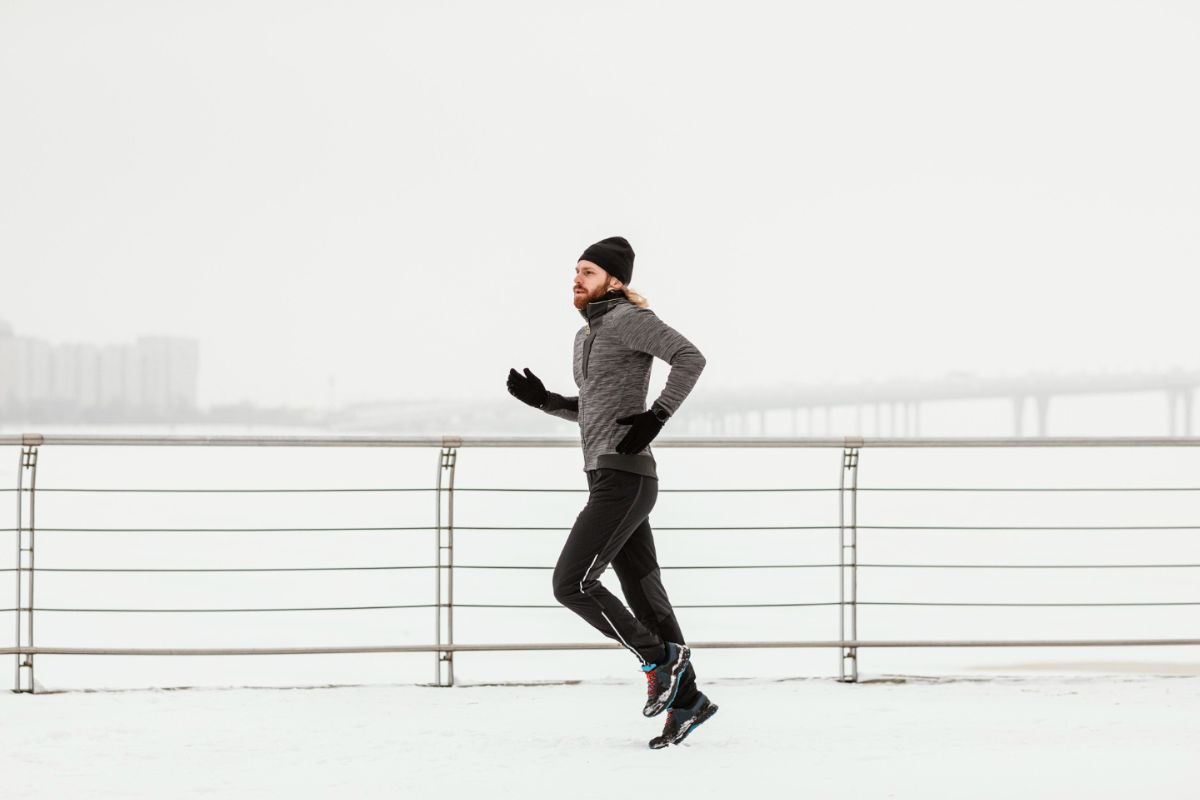
Benefits of Running in Winter
Running in winter can be a great way to stay fit and active. Cold weather running has many benefits, including the potential to increase your metabolic rate for better caloric burn.
Runners can also take advantage of the added resistance provided by low oxygen levels experienced at higher altitudes when exercising outdoors this season for an extra challenge.
Winter exercise also helps regulate body temperature, allowing runners to remain comfortable as they push through even the wettest conditions.
Disadvantages and Risks of Running in Winter
Running in winter can be risky due to snow packed trails, icy surfaces, and cold temperatures, which increase the risk of slips and falls and can lead to serious injuries. Apart from hazardous slippery conditions during winter runs, hypothermia and frostbite are potential dangers for runners competing in cold weather. Even though running in winter offers many benefits, precautions should be taken when running in such extreme temperature ranges.

Pro Tip:
Wear proper winter gear, including a base layer as well as an outer windproof layer. Hats, gloves, and boot covers with good grip are essential for being safe on snowy paths and trails.

Pro Tip:
Wear proper winter gear, including a base layer as well as an outer windproof layer. Hats, gloves, and boot covers with good grip are essential for being safe on snowy paths and trails.
Do You Need Special Shoes for Winter Running?
Winter running can present a new world of challenges that regular running shoes can’t always handle, from deep snow to icy trails. When running on ice, shoes play an extremely important role. If you’re planning on doing any winter runs or hikes, it is important to invest in specialized footwear and gear that will provide extra traction.
Winter running shoes have special features designed to increase grip on snow and ice while ensuring maximum comfort during your run. They offer superior protection and performance against cold temperatures.
However, you don’t need to buy special shoes to protect yourself from slipping. Running snow spikes are a popular traction device for winter running used to provide optimum grip on packed snow and ice. Spikes can help increase stability, reduce slipping, and avoid potentially dangerous falls or injuries while out on the trails.
Subscribe to Our Running Newsletter!
Get free running tips from renowned professional athletes and discounts from top-notch brands.
Traction Devices for Running in Winter
Choosing the right winter running shoes with spikes is essential to stay safe and keep moving, whether you’re hiking, jogging, or trail-running. From coiled devices to microspikes, there are many choices available that provide different levels of grip over icy terrain.
Microspikes, crampons, snow grips, ice cleats, and ice spikes are various names for traction devices or shoe attachments that offer extra grip on icy surfaces. Ice grippers are designed to give runners a better grip when running in winter conditions like snow or on slicker terrain.
Advantages of Using Traction Systems for Winter Running
For runners, the ability to have good grip and secure footing on snowy and icy surfaces is essential. Trail running spikes are specifically designed for winter running, providing an extra layer of stability to help ensure peace of mind when tackling challenging environments.
Removable traction systems generally offer more versatility since different types can be used depending on the intended terrain or activity: from no-show crampons for gravel runs to full-size ice cleats and snow grips for rugged mountain paths.
Traction devices significantly improve grip on slippery surfaces, such as snow and ice, which helps prevent slips, falls, and other potential injuries caused by poor footwork while running in cold weather conditions.
5 Types of Traction Devices
These types of traction devices come in varied models, from coiled devices for treading on muddy terrain to spiked versions made to provide extra grip on packed snow or ice.
Depending on the activity and running conditions, it is important to choose the right type of device. Let’s take a closer look at them:
1. Coiled Devices
Coiled devices are a type of traction device specially designed for winter running on snow and ice. They feature long helical coils that wrap around the sole of your shoe, providing extra grip and stability when traversing slippery surfaces.
These devices are ideal for trail running, backcountry hiking, and walking in cold climates with frequent snow or icy conditions. With coiled devices you can stay stable even in the most challenging terrains, allowing you to explore those more difficult areas without risking an injury due to slipping or sliding.
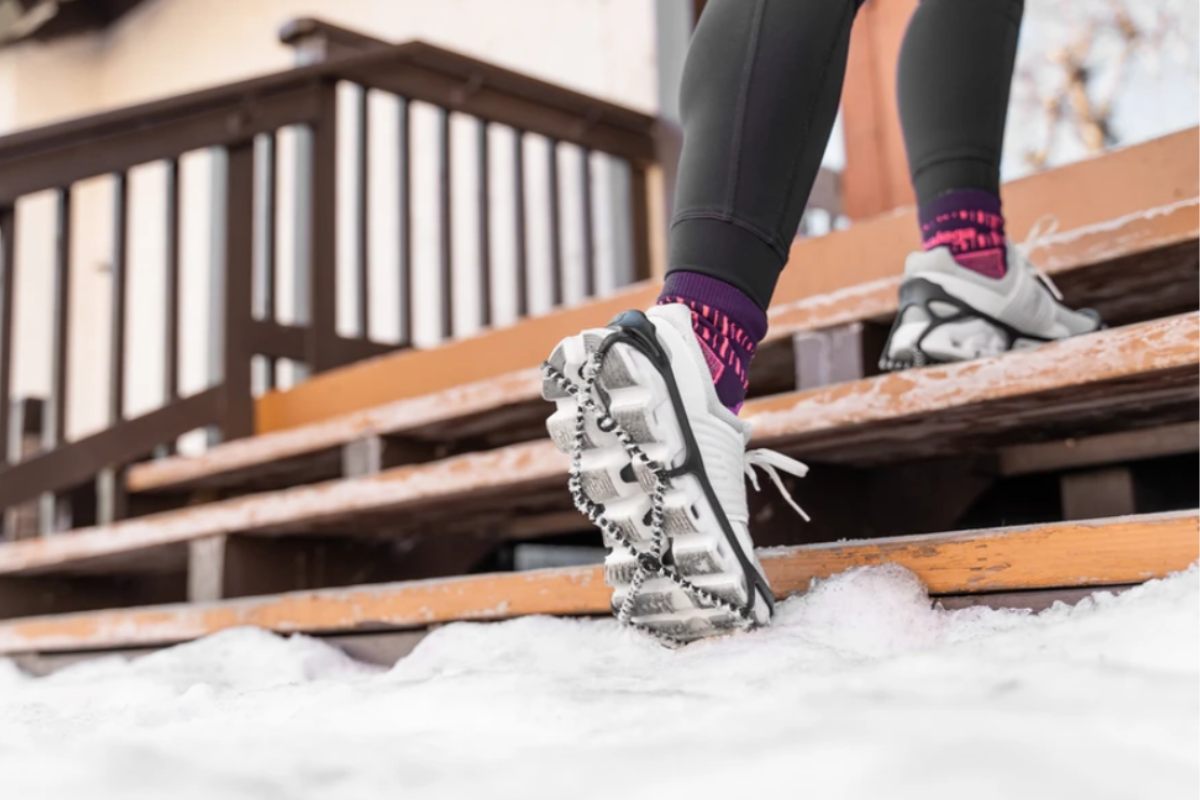
2. Spiked Devices
Spiked devices are an excellent choice for running or activities in icy and snowy terrain. They provide better grip and traction than traditional footwear, helping you to stay safe and secure while maintaining your speed.
Compared to coiled devices, winter running spikes for shoes offer improved edge control when you’re navigating around obstacles like rocks and roots. Generally speaking, they comprise four or more spikes under the foot that dig into snow, reducing slipperiness.
What makes them a great winter running option is their lightweight design. They are typically made of either stainless-steel chains or rubber elements connected by stretchy nylon bands that easily slip over any ordinary shoes at the start of each run.

3. Crampons
Crampons are an essential piece of gear that makes long ascents in snow and ice much safer. Often featuring many metal teeth or spikes radiating from a base plate, crampons for running attach to boots and allow you to traverse icy terrain with confidence. Although these spikes seem ideal for running on slippery surfaces, their aggressive design makes them overkill when used on flat and gently sloping terrain.
While most crampons come pre-sized without adjustment features, some styles offer adjustable straps that alter the size. This way, they fit snugly around any shoe shape or size providing maximum security and stability when moving over uneven ground covered by snow or packed frost layers.

4. Microspikes
Microspikes are traction systems designed to provide grip and stability on snowy and icy terrain. They are lightweight metal pieces that attach securely to the underside of footwear with flexible straps or elastic bands. With multiple spikes along the sole, this device increases your traction. Microspikes can be used for a variety of activities, such as winter running, hiking, fishing, and walking in tough winter conditions.
The spikes themselves may vary in shapes, ranging from star-shaped alloys to small circular points. Depending on the type, they generally have two settings: no-slip steel or aluminum alloy, which is suitable for heavily icy environments, or rubberized steel plates perfect for trail running.
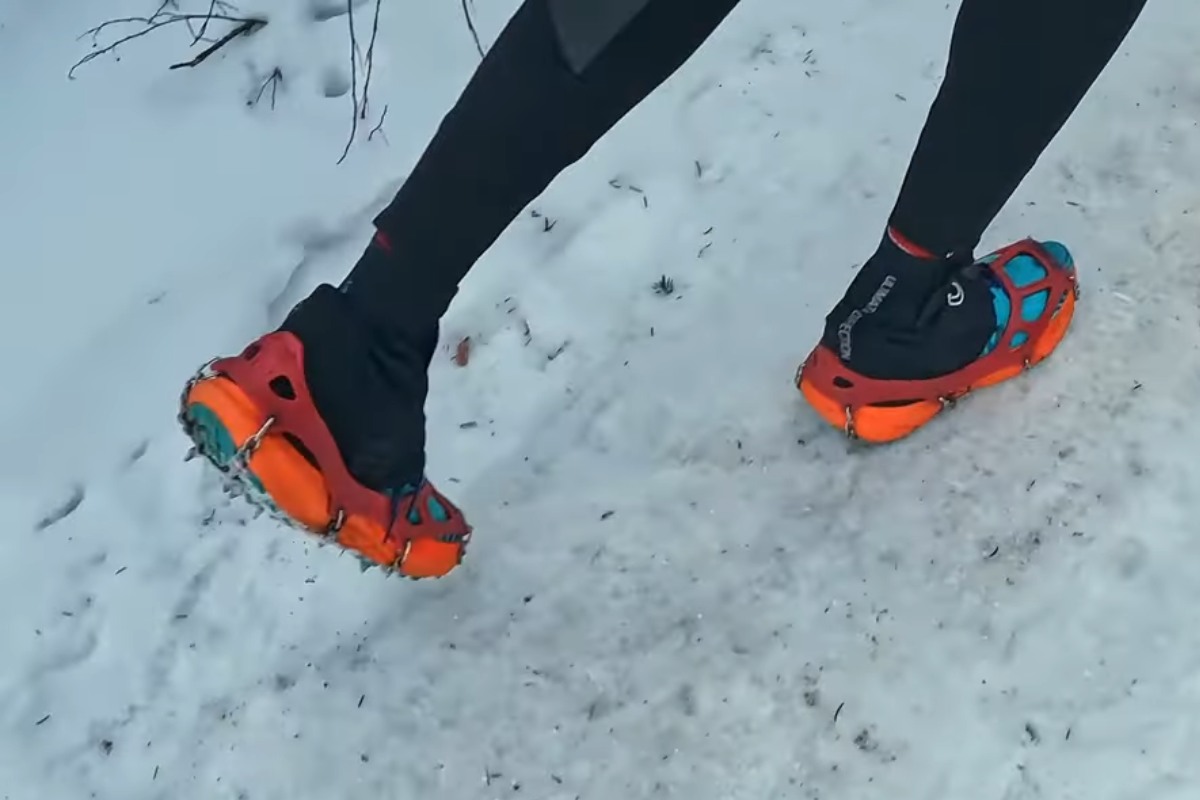
5. Ice Cleats
Ice cleats are equipped with spikes that securely grip the ground and allow for increased mobility during winter activities such as running, cross-training, backcountry hiking, trail running and other outdoor activities. They come in various designs but generally feature anywhere from 4 to 18 screws or spikes made of stainless steel, carbide steel, or tungsten, which provide superior traction on a variety of terrains.
Ice cleats are effective for anyone wanting to run outdoors during the winter months as they can keep runners safe by preventing falls due to slick surfaces while providing more support while navigating terrain changes like hillsides or slopes. Additionally, ice cleats offer powerful grip even over compacted snow and allow for improved speed control, which can be beneficial when running at higher altitudes where trails tend to be more slippery than usual.
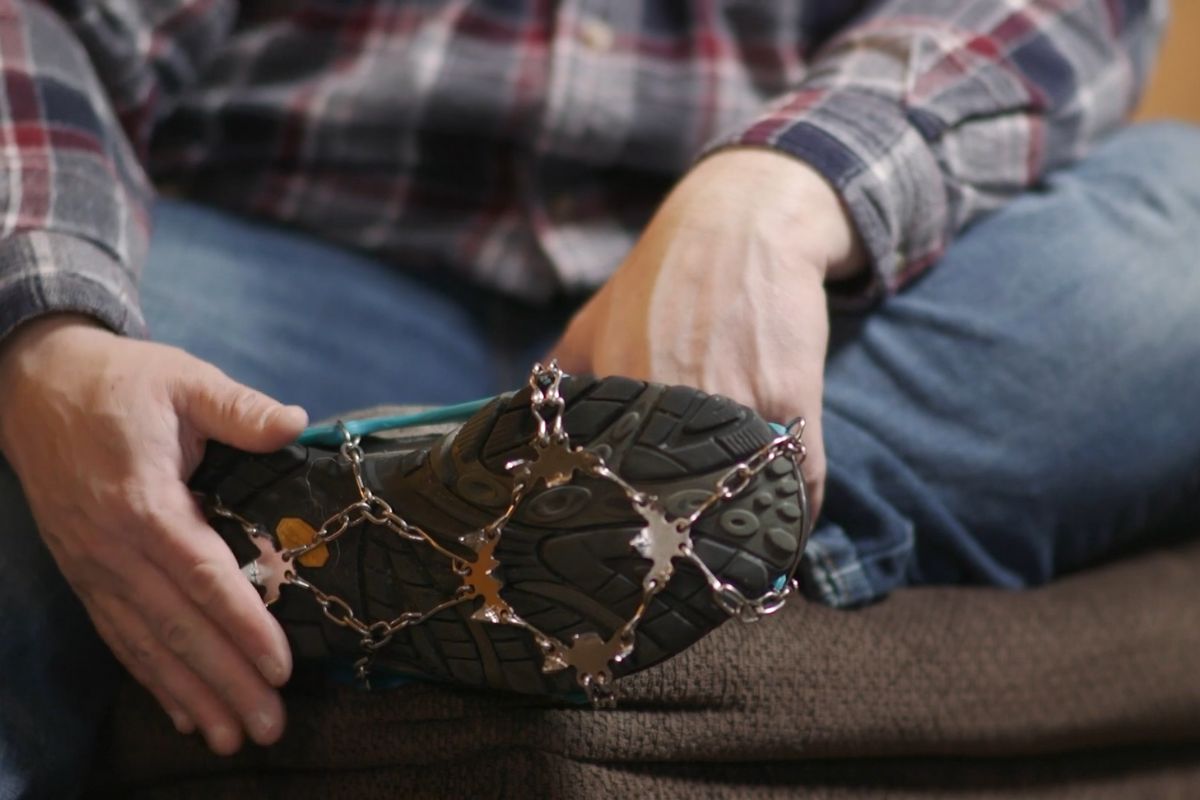
How to Choose between Available Traction Devices for Winter Running?
Finding the appropriate traction device for winter running may depend on various factors, such as trail difficulty and terrain, number and length of spikes used, fastening methods, fit and adjustability.
Knowing where to look for these details can help you pick the right traction system for your next run this winter.
1. Trail Difficulty and Terrain
Microspikes are essential for navigating snowy and icy trails, especially when the terrain is challenging. It's important to consider the specific conditions and terrain where the spikes will be used since different types of microspikes can be designed for certain trail difficulties or terrains.
A higher spike count means more contact with the ground so you get greater grip. However, too long or too many spikes could reduce mobility and be uncomfortable to use when running. Spikes should also match in size so that they create an even surface-area contact across the bottoms of your shoes or boots.
While a hilly course may require more aggressive traction devices with longer spikes, flat roads might only need shorter cleats or coiled traction systems. For rocky and uneven surfaces, look for ice cleats that provide greater stability with extra gripping points on each spike.
With snowshoeing or climbing up steep mountainsides, crampons could give you additional grip in deep snowdrifts to prevent slips and slides while going uphill.
2. Fastening Method, Fit, and Adjustability
Finding the right fit for winter running traction devices is essential as a comfortable and secure fit enhances performance on different surfaces. Coiled or 10-point crampons vary in fastening methods depending on whether they are laced, strapped, buckle, clip, or Velcro.
Microspikes can be found in both lace-up and strap-on style, while ice cleats are often fully adjustable with two buckles that cinch tight around the foot. For mountain terrain, consider crampons that feature 10 points of contact for more extreme levels of grip.
3. Durability and Temperature Ratings
Microspikes are designed to hold up in even the most rugged winter conditions. The metal spikes are embedded in a specially molded rubber base that is optimized for grip and traction over varying terrain shapes, from snowfields to icy trails and rocky paths.
To ensure superior durability and long-lasting performance, they’re made of wear-resistant materials such as stainless steel or tungsten carbide alloy. This means they can withstand temperatures below 0°F (-18°C) with minimal spike erosion or wear out without breaking so you can safely traverse any terrain no matter how extreme it gets.
How to Properly Use Microspikes for Running in Winter?
In order to ensure your safety and comfort while traversing the winter trails, it is important to understand how to use microspikes properly and safely. Here are some basic tips for your safety:
1. Check Coating and Tighten the Straps before Each Use
It is an essential step for safety, stability, and effectiveness. The coating of the spikes can wear down over time when exposed to road salt or other elements in winter conditions. This reduces traction and may cause slipping, making it a hazard for runners.
Similarly, if the straps aren't tightly secured prior to use, it could lead to unintended movements during running, which can result in slippery footing or unwanted twisting of joints.
2. Use Them for Appropriate Terrain and Temperature
Microspikes are one of the best tools to help navigate winter terrains while running. They provide excellent grip and stability on icy surfaces, making winter running safer. It is important to make sure the microspikes you choose fit well and are tailored to your type of activity in order to be most effective.
It is essential to use microspikes for appropriate terrain and temperature conditions. Not all types of ice or snow require use of spikes when running. Some environments may pose more risk than others due to potential variations, such as glare ice, which can be especially slippery even with 1/4 inch thick traction devices installed.
3. Replace Them when Necessary
Microspikes typically comprise dual-density and stainless-steel spikes, which have a limited lifespan due to wearing down over time with use on rough, icy terrain.
Replacing microspikes should not be taken lightly, as it can mean the difference between a safe run and a dangerous one. However, knowing when it's time to swap out your current pair for a fresh set can sometimes feel tricky for new runners.
If the spikes become too worn or loose, they will no longer be able to effectively grip the surface beneath them, leading to decreased traction, increased likelihood of slips and falls, and greater risk of injury. Frequently check them on visible signs of wear and loss of traction.

Pro Tip:
Generally speaking, you should keep an eye out for any changes in performance, such as reduced ability to grip surfaces efficiently, as it could indicate that they need replacing soon.

Pro Tip:
Generally speaking, you should keep an eye out for any changes in performance, such as reduced ability to grip surfaces efficiently, as it could indicate that they need replacing soon.
How to Care for Microspikes for Winter Running?
Here are 2 basic tips for taking care of your running spikes for winter:
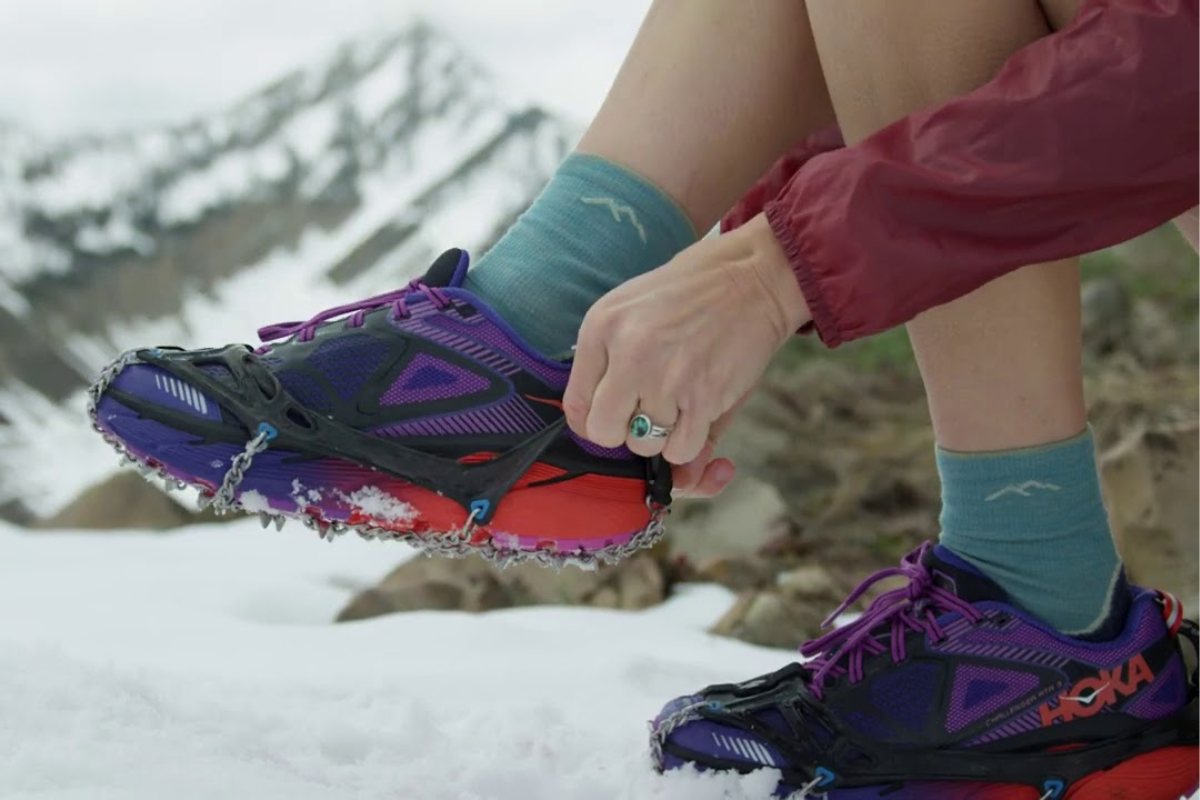
1. Keep Them Clean and Free of Salt and Debris
For runners participating in winter sports, it is essential to keep their microspikes clean and free of salt and debris. This helps to ensure that the microspikes remain effective for winter running conditions like snow and ice and can prevent damaged spikes or corrosion.
Cleaning the microspikes after each use with a simple rinse of water can help prevent any accumulation of dirt, salt, or other debris stuck between the spikes which could interfere with grip while running. Regular cleaning will not only keep them functioning properly but also extend their lifespan by preventing rust.
2. Store Them in a Dry and Cool Place
In order for microspikes to remain in good condition and ready for use on the trail, they should always be stored in a dry and cool place away from direct heat sources. With care, microspikes will last longer and their performance won’t be compromised due to wear.
Exposing microspikes to direct sunlight or extreme heat can cause damage to their rubber and metal components, resulting in reduced performance and shorter lifespan.
Extreme temperatures create more stress on the surface of the spikes which, when combined with de-icing salt residue, wear away at rubber and metals much faster than normal circumstances.
Microspikes vs. Winter Running Cleats: Key Differences for Runners
A runner must decide between micro spikes and winter running cleats based on the type of activity they are planning for, as well as other preferences like fit, length, and style. Microspikes are designed to provide grip in snow-packed trails with occasional areas of ice or mud while running cleats can be used in more extreme conditions such as icy routes.
Microspikes
Pros:
- Can be used with a wider range of footwear, including hiking boots.
- Are best suited for less technical terrain found on average winter hikes that include patches of snow or ice.
- Feature chains held together by metal cables connected to a flat baseplate with spikes to maintain traction and ground contact when walking or running over slick surfaces.
- Straps feature "teeth" that help hold them together firmly around your shoe providing additional traction.
Cons:
- Not suitable for activities like trail running due to lack of flexibility when changing directions quickly.
Winter Running Cleats
Pros:
- Often made from Teflon® fabric webbing rather than steel cable – less durable but much lighter weight making them better suited for faster paced activities like trail running (also great option when going up hills).
- Teeth help keep them tightened properly onto your shoes while maintaining maximum stability across slippery surfaces.
- Unlike microspikes where there may only be one size, cleats come in multiple sizes, so make sure to measure carefully before purchasing.
Cons:
- Using them on hard surfaces may lead to increased risk of injury, especially in ankles and knees.
Frequently Asked Questions about Running Microspikes
If You're Transitioning From Road to Track, Should You Bring Two Sets of Traction?
Yes, when transitioning from road to track running, it's advisable to bring two sets of traction, such as microspikes and crampons. Roads are consistent smooth platforms with mild inclines and declines, resulting in the need for less grip and stability of microspikes. Tracks may include terrain changes like off-camber surfaces or runs that require aggressive speed of crampons.
Can I Use Micro Spikes for Activities Like Trail Running?
Yes, microspikes are a great choice for winter trail running. They are lightweight and durable, providing superior grip while reducing the risk of falls when running on icy or snow-covered terrain.
Are There Safety Precautions when Using Traction Devices for Running?
It’s key to choose the device that is appropriate for the right type of terrain and conditions. Certain spikes may be too short for hard-packed trails or too long for sidewalks. Find a perfect fit and use it properly so as not to increase your risk during winter runs.
Are There Other Names for Traction Devices for Winter Running?
Traction devices for winter running come in a variety of forms and have many different names, depending on the design and material used. Ice cleats, microspikes, crampons, snow grips, coiled cleats and walk traction devices are things you should look for in order to maximize safety during your runs.
Final Thoughts on the Best Microspikes for Running
When choosing the best microspikes for winter running, there are several important factors to consider. First, look at trail difficulty and terrain – what type of running or activity is needed? Then, factor in the number and length of spikes on the device – make sure they’re adequate for your needs.
Consider additional features such as fastening method, fit and adjustable straps. Additionally, look for attributes such as durability and temperature ratings that will further enhance your experience when running in cold weather conditions.
When it comes to top recommended brands and models for microspikes specifically designed for runners, there is our key standout: Kahtoola EXOspikes. They provide reliable traction without weighing down feet during long runs into snow-covered trails.
When selecting any type of traction system, always take safety precautions by slowing down speeds on possible slipping areas. Stay safe and confident!
What traction device do you use for winter running? Have you tried any models from our list? Please, share your experience in the comments below.
Also Read:
- Saucony vs. Brooks
- Best Recovery Drink for Runners
- How to Wash Brooks Shoes
- Best Running Shoes For Forefoot Strikers
- 2 Miles Is How Many Steps
- Best Running Socks to Prevent Blisters
- Nude Running
References:
- Anne Kathrine Lorentzen, Christopher Davis, Luit Penninga, “Interventions for Frostbite Injuries,” The Cochrane Database of Systematic Reviews, no. 12 (2020): CD012980. https://www.cochranelibrary.com/cdsr/doi/10.1002/14651858.CD012980.pub2/full
- Cristina Rotllan, Ginés Viscor, “Winter Sports Injuries in Elite Female Athletes: A Narrative Review.” International Journal of Environmental Research and Public Health 20, no. 10 (2023): 5815. https://www.ncbi.nlm.nih.gov/pmc/articles/PMC10218179/
- “Design,” Kahtoola, https://kahtoola.com/about/design/ (accessed December 12, 2023).
- Hannes Gatterer, Tobias Dünnwald, Rachel Turner, Robert Csapo, Wolfgang Schobersberger, Martin Burtscher, Martin Faulhaber, Michael D. Kennedy, “Practicing Sport in Cold Environments: Practical Recommendations to Improve Sport Performance and Reduce Negative Health Outcomes,” International Journal of Environmental Research and Public Health 18, no. 18 (2021): 9700. https://www.mdpi.com/1660-4601/18/18/9700
- Yaroslav Molkov, Dmitry V. Zaretsky, “Why Is It Easier to Run in the Cold?” Temperature 3, no. 4 (2016): 509-511. https://www.tandfonline.com/doi/full/10.1080/23328940.2016.1201182
Why Trust Us?
Pace Passion is committed to helping runners of all levels find the best product to improve their training and running performance. We use a comprehensive methodology for reviewing running and nutrition products for runners, so we only recommend products that we use ourselves or have had the opportunity to test. Read more about product testing here. Learn more about us here.
If you have any questions or suggestions, you can contact us via email – [email protected]

